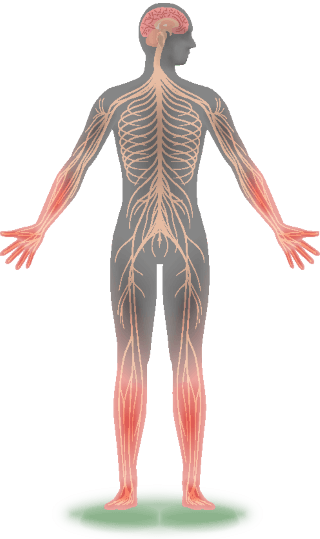HSAN1E & DMNT1-Complex Disorders
HSAN1E & DMNT1-Complex Disorders

Hereditary Sensory and Autonomic Neuropathy, Type 1E (HSAN1E) is an extremely rare hereditary neurological degenerative disease, caused by a mutation of the DNMT1 gene.
Affected individuals will experience a progressive inability to hear, walk, speak, or to comprehend simple tasks or conversations. Eventually the individual’s body will completely shut down, causing death in their late 40’s to early 50’s.
HSAN1E is characterized by an impaired function of the sensory nervous system which presents itself in a triad of symptoms: hearing loss, behavioral changes, and peripheral neuropathy.
Affected individuals will experience early onset progressive hearing loss. This hearing loss is marked by severe decreases in the ability to hear until eventually the individual will become totally deaf. Individuals may benefit from the use of hearing aids and devices, but due to the progressive nature of the hearing loss, these devices will become ineffective.
Behavioral changes (dementia) is marked by a decrease in cognitive abilities. Individuals may gradually experience the inability to multitask, or complete simple tasks. The individual may become confused or frustrated, causing them to withdraw. Other individuals may become angry or experience rage at not being able to understand or comprehend. Individuals may be unable to keep or find a job. As the disease progresses some individual may suffer from hallucinations, and erratic or obsessive behaviors.
Peripheral neuropathy is a numbness (loss of feeling) or tingling in the hands or feet. Individuals may experience a twitching in the arms, legs, hands or feet. Peripheral neuropathy is best determined by a nerve conductivity test, which must be performed by a physician.

DNMT1 complex disorders such as ADCA-DN (autosomal dominant cerebellar ataxia, deafness, and narcolepsy), is marked not only by the triad of symptoms but also by narcolepsy-cataplexy, which is the sudden loss of muscle tone, that can be triggered by strong emotion.
While all affected individuals will experience the triad of symptoms, some may also suffer from other symptoms such as Myoclonus or the involuntary muscle spasms or contractions of muscles, optic atrophy, which is deterioration of the optic nerve, seizures, and Cerebellar Ataxia which marked by an unsteady or wobbly gait.
This list is not an all inclusive list of symptoms but some of the more reported symptoms to date.
Other names for Hereditary Sensory and Autonomic Neuropathy, Type 1E:
- HSAN1E
- DNMT1 complex disorder
- Hereditary sensory autonomic neuropathy with dementia and hearing loss
- Neuropathy, hereditary sensory, with hearing loss and dementia
- Hereditary sensory neuropathy type IE
- DNMT1-Related Dementia, Deafness
- ADCA-DN
A diagnosis of a DNMT1-complex disorder is achieved through genetic testing. If you or someone you love is suffering from the above symptoms contact a neurologist or geneticist.
